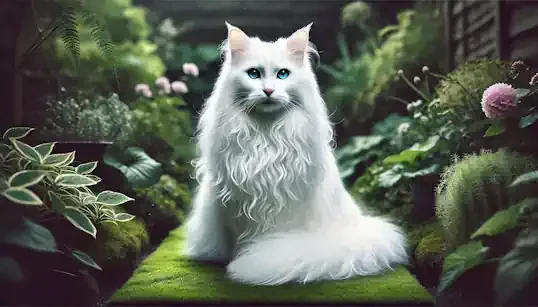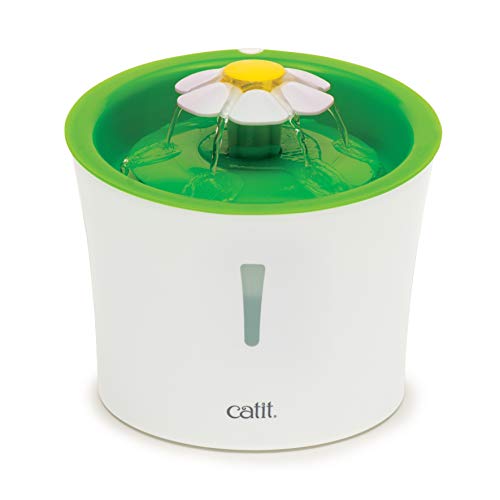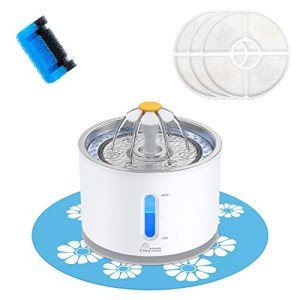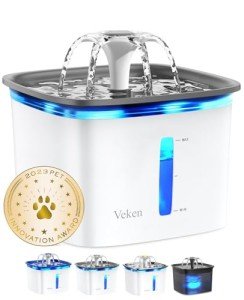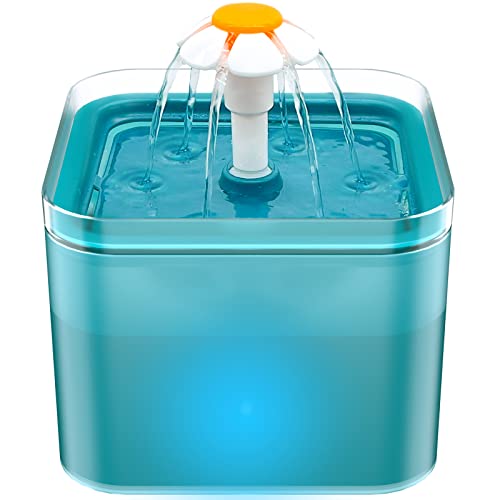Imagine a cat with a flowing, silky white coat, eyes like jewels, and an air of regal elegance. Does the idea of such a naturally beautiful and playfully intelligent feline companion captivate you? If so, you may be drawn to the enchanting Turkish Angora. This breed, steeped in history and renowned for its graceful appearance and engaging personality, is more than just a pretty face. This guide will take you on a comprehensive journey into the world of the Turkish Angora, exploring their fascinating origins, striking looks, delightful temperament, and the practicalities of caring for one of these exquisite creatures. Whether you're a seasoned cat enthusiast or just beginning to explore the possibilities of feline companionship, prepare to be charmed by the allure of the Turkish Angora.
The Turkish Angora is not a breed crafted by modern selective breeding; rather, they are a living testament to natural feline evolution. Their story begins in the mountainous, historically significant region of Ankara, previously known as Angora, in Turkey. This area, with its varied climate, is believed to have shaped the Angora into the resilient and adaptable cat we know today. For centuries, these elegant felines roamed freely, developing their distinctive silky coats to withstand the temperature fluctuations of their native land. They were more than just local cats, though. Throughout history, whispers of these beautiful long-haired cats from Angora began to circulate, capturing the attention of travelers and dignitaries. Some historians suggest they may have even been depicted in ancient art and mentioned in early texts, although concrete evidence remains elusive. What is clear is that by the 16th century, Turkish Angoras were becoming prized possessions in Europe, often gifted as diplomatic presents and revered for their exotic beauty in aristocratic circles. These were not just pets; they were symbols of prestige and elegance.
However, the very traits that made them so admired also contributed to a precarious period in their history. As other long-haired breeds, particularly the Persian, rose in popularity in the 19th and 20th centuries, the Turkish Angora's pure lineage faced a significant threat. Crossbreeding, both intentional and unintentional, diluted the distinct characteristics of the original Angora. By the mid-20th century, the breed teetered on the brink of extinction in its homeland. Fortunately, dedicated efforts arose to safeguard this national treasure. Turkish zoos, particularly the Ankara Zoo, played a crucial role in establishing and maintaining a pure breeding program. These dedicated conservationists recognized the unique genetic heritage of the Angora and worked diligently to preserve it. It was not until the 1960s that Turkish Angoras were officially recognized as a distinct breed in the Western world, with breed standards being meticulously established and refined by cat registries internationally. This recognition marked a turning point, allowing for the breed's resurgence and ensuring its survival for generations to come. Understanding this rich and, at times, fragile history adds another layer of appreciation to the Turkish Angora. They are not just beautiful cats; they are living links to a long and fascinating past, a testament to the power of natural selection and the importance of breed preservation.
The Turkish Angora is a study in elegant balance. Medium in size, they possess a graceful and refined physique that is both athletic and aesthetically pleasing. Their bodies are neither bulky nor fragile, but rather possess a lithe strength that speaks to their natural agility. They move with an almost ethereal lightness, further enhancing their air of sophistication. Look closer, and you’ll notice their refined bone structure, providing a framework for their elegant lines without sacrificing their robust health. This is not a delicate, ornamental cat; they are built to move, to play, and to engage with their environment. Beneath that silky coat lies a surprisingly muscular body, ready to spring into action for a playful chase or a graceful leap to a high vantage point.
But it is, without a doubt, the coat of the Turkish Angora that first captures the eye. It is their signature feature, the hallmark of their beauty. The texture is truly remarkable: fine, silky, and flowing like water. Unlike some long-haired breeds that boast thick, dense fur, the Angora's coat is luxuriously soft but surprisingly light. It’s not as prone to matting as some heavier coats, making grooming a more manageable task than you might expect for such a long-haired cat. Interestingly, their coat length isn't static. It subtly changes with the seasons, growing longer and more luxurious in the winter months to provide warmth, and then naturally thinning out in the summer to keep them comfortable in warmer temperatures. While traditionally associated with a pristine, snow-white coat, the Turkish Angora actually comes in a beautiful array of colors and patterns. The iconic white Angora remains undeniably striking, evoking images of pure elegance and often paired with captivating blue or odd-eyes. However, the breed standard recognizes a wide spectrum of solid colors, from rich blacks and blues to warm reds and creams. Smoked and shaded patterns add depth and mystery, while tabby patterns, in classic mackerel or swirling classic variations, bring a touch of wild beauty to their refined appearance. The possibilities are surprisingly diverse, showcasing the breadth of natural genetic variation within the breed.
Adding to their captivating appearance are the Angora’s expressive eyes and ears. Their eyes are large and almond-shaped, lending them an alert and intelligent gaze. The range of eye colors is another source of fascination. While blue and green are commonly seen, you may also encounter Angoras with striking gold or amber eyes. The mesmerizing "odd-eyed" Angora, with one blue eye and one eye of another color (often green, gold, or amber), is particularly prized and adds an element of mystique. Complementing their expressive eyes are their large, pointed ears. Set high on their head, they are often generously tufted at the tips, adding a touch of playful wildness to their sophisticated look. These ears are not just visually appealing; they are highly mobile and sensitive, constantly swiveling to capture sounds, reflecting the Angora's innate curiosity and alertness. Finally, no description of a Turkish Angora is complete without mentioning their tail. It is long and plumed, a glorious flourish of silky fur that is carried with unmistakable pride. Think of it as the final brushstroke in a masterpiece of feline artistry, perfectly balancing their elegant physique and adding a touch of dramatic flair. In essence, the visual appeal of the Turkish Angora is not just about individual features, but the harmonious blend of all these elements. They are beautiful in form and fur, a testament to the refined artistry of nature.
Living with a Turkish Angora is to be constantly entertained and adored by an intelligent, playful, and deeply affectionate companion. These are cats with active minds and a keen sense of curiosity. They are quick learners, easily trainable, and often enjoy engaging in puzzle toys and games that challenge their intellect. Don't be surprised to find your Angora figuring out how to open doors or manipulate objects; their problem-solving skills can be quite remarkable. This intelligence also translates into trainability. Many Angoras can be taught tricks, respond to their names reliably, and even learn to walk on a leash, providing enriching opportunities for both mental stimulation and bonding. Their innate curiosity drives them to explore their surroundings thoroughly. Nothing escapes their attention, and they are always eager to investigate new objects, sounds, and scents. Provide them with stimulating environments, filled with climbing structures, window perches, and a rotation of interesting toys to keep their active minds engaged and prevent boredom.
The Angora is not a lap-cat in the stereotypical sense, content to passively observe the world from a cushion. They are bundles of playful energy, retaining their kitten-like zest for life well into adulthood. Interactive play is not just a recommendation; it's a necessity for their well-being. They thrive on chasing toys, batting at dangling objects, and engaging in games of "hunt the prey." Fishing rod toys, laser pointers (used responsibly), and crinkle balls are often met with enthusiastic responses. Climbing is another favorite pastime. Provide them with cat trees, shelves, or even sturdy furniture they are allowed to climb to satisfy their natural inclination to explore vertical spaces and survey their domain from above. Don’t underestimate their need for physical activity. Daily playtime is crucial to burn off their energy, prevent destructive behaviours stemming from boredom, and maintain their physical and mental health.
Despite their energetic and independent nature, Turkish Angoras are profoundly affectionate and social creatures. They form deep bonds with their families and are known for their devoted and loving personalities. While they may not be overly clingy or demanding of constant attention, they crave connection and thrive on interaction. They are often described as "velcro cats," happy to follow their favorite humans from room to room, simply wanting to be near you and involved in your daily life. Angoras often bond strongly with one particular person in the household, becoming a devoted shadow and confidante. However, they are generally affectionate with all members of the family and can be wonderful companions for children, particularly older children who understand how to interact respectfully with cats. Early socialization is key to ensuring they are comfortable and confident around children and other pets. When properly introduced and raised, Turkish Angoras can coexist peacefully and even playfully with other cats and cat-friendly dogs. Their social nature extends beyond humans; they often enjoy feline companionship and can thrive in multi-cat households.
Finally, it's worth noting that Turkish Angoras, while not excessively loud compared to some breeds, can be vocal cats. They often use their voices to communicate their needs, express their opinions, and simply engage with their human companions. Their vocalizations are often described as soft and melodic, more of a gentle meow or trill than a demanding yowl. Pay attention to their vocal cues; they are often trying to tell you something, whether it's that they're hungry, want to play, or simply desire your attention. In summary, the Turkish Angora personality is a delightful blend of intelligence, playfulness, affection, and engaging sociability. They are not just beautiful to look at; they are rewarding companions who bring joy, entertainment, and unwavering love into the lives of those fortunate enough to share their homes with them.
Caring for a Turkish Angora is a rewarding experience, but like any pet, it requires understanding their specific needs and committing to providing them with proper care. Despite their long, luxurious coat, grooming a Turkish Angora is surprisingly manageable compared to some other long-haired breeds. Their silky, single-layered coat is less prone to matting and tangles. Regular brushing, about two to three times a week, is usually sufficient to keep their coat in beautiful condition, remove loose hair, and prevent hairballs. A good quality slicker brush or a fine-toothed comb will be your best tools for maintaining their silky fur. While they generally keep themselves clean, bathing is occasionally necessary, especially if they get into something messy or their coat starts to look dull. However, frequent bathing is not required and can even dry out their skin. When bathing, use a cat-specific shampoo and conditioner to maintain the health and shine of their coat. Beyond coat care, routine nail trimming, ear cleaning, and dental care are essential parts of a Turkish Angora's grooming regimen, just as they are for any cat breed. Trim their nails every few weeks to prevent overgrowth and scratching. Check their ears regularly for wax buildup or signs of infection and clean them gently with a veterinarian-approved ear cleaning solution. Daily tooth brushing, or at least regular dental checkups and cleanings, are crucial for preventing dental disease, a common issue in cats.
Proper nutrition is fundamental to the health and well-being of your Turkish Angora. Feed them a high-quality cat food that is appropriate for their age, activity level, and any specific dietary needs they may have. Look for cat foods that list meat as the primary ingredient and are formulated to be complete and balanced. Pay attention to portion control. Turkish Angoras, while active, can be prone to overeating if given unlimited access to food, which can lead to weight gain. Follow the feeding guidelines on the cat food packaging and adjust portions as needed to maintain a healthy weight. Fresh, clean water should always be available to your Angora. Hydration is crucial for their overall health, and especially important for preventing urinary tract issues common in cats.
Turkish Angoras are energetic cats who need regular exercise and playtime to stay happy and healthy. Daily interactive play sessions are vital. Dedicate at least 15-20 minutes each day to engaging in active play with your Angora. Use toys that mimic prey, such as fishing rod toys, laser pointers (used responsibly), and toy mice, to satisfy their hunting instincts. Provide them with plenty of opportunities to climb, scratch, and explore. Cat trees, scratching posts, and window perches are essential for enriching their environment and allowing them to express their natural behaviors. Puzzle toys are excellent for stimulating their intelligent minds and providing mental enrichment. Rotate toys regularly to keep them interested and prevent boredom.
Turkish Angoras are generally a healthy breed, thanks in part to their natural origins. However, like all breeds, they can be predisposed to certain health conditions. While not overly common, Hypertrophic Cardiomyopathy (HCM), a heart condition, has been reported in the breed. Responsible breeders screen their cats for HCM to minimize the risk. Another condition, albeit rare, sometimes mentioned in connection with the breed is Angora cat ataxia, a neurological condition. Again, ethical breeders take steps to screen for and avoid this issue. The best approach is to source your Angora from a reputable breeder who prioritizes health and genetic testing. Regardless of breed, regular veterinary checkups are crucial for preventative care and early detection of any health issues. Annual vet visits, vaccinations, parasite prevention, and dental checkups are essential for maintaining your Angora’s long-term health and well-being.
For the safety and longevity of your refined Turkish Angora, an indoor lifestyle is generally recommended. While they may enjoy supervised outdoor time in a secure catio or on a leash and harness, allowing them to roam freely outdoors exposes them to numerous dangers. Traffic, predators, diseases, and the risk of getting lost are all significant concerns for an elegant breed like the Angora. Keeping them indoors provides a safe and controlled environment where you can better protect them from harm and ensure they live a long and healthy life. However, indoor living should be enriching. Provide them with plenty of vertical space, toys, scratching posts, and window perches to keep them stimulated and prevent boredom within the confines of your home. In summary, caring for a Turkish Angora involves a commitment to grooming, proper nutrition, ample exercise, and proactive health management. By understanding their specific needs and providing them with a loving and enriching environment, you can ensure your Angora companion thrives and brings joy to your life for many years to come.
Is a Turkish Angora the right cat for you? This is a crucial question to consider before welcoming one of these elegant felines into your home. The ideal home environment for a Turkish Angora is one that is active and engaging, with owners who have the time and energy to dedicate to their playful and intelligent nature. They thrive in households where they receive plenty of interaction, playtime, and attention. Families with older children who understand how to interact respectfully with cats often make wonderful Angora owners. They can also thrive as companions for individuals or couples who are home frequently and can provide them with the stimulation they need. While they can adapt to apartment living, it's essential to ensure they have sufficient environmental enrichment within the smaller space, such as cat trees, window perches, and plenty of toys to prevent boredom.
Consider your lifestyle compatibility with the Angora’s needs. Their energy level and need for interaction are significant factors. If you are a busy individual who is away from home for long periods or prefer a very quiet and low-maintenance pet, a Turkish Angora might not be the best fit. They require daily playtime and thrive on interaction with their human companions. Think about the time commitment for grooming. While their coat is relatively low-maintenance for a long-haired breed, regular brushing is still necessary. Are you prepared to dedicate a few times a week to grooming sessions? Also, factor in their need for attention. They are social cats who crave connection and can become demanding if they feel neglected. If you are seeking a very independent cat who prefers to be left alone, the Angora may not be the ideal choice.
Be realistic about potential challenges. While they are delightful companions, there are a few potential considerations to be aware of. Shedding, while moderate compared to some long-haired breeds, is still present. If you are highly sensitive to cat dander or prefer a completely hair-free environment, be prepared for some shedding, particularly during seasonal coat changes. Their need for attention can sometimes manifest as demanding behaviour if they feel ignored or bored. They may vocalize more to get your attention or engage in playful antics to initiate interaction. While their vocalizations are generally soft, it's something to be aware of if you are particularly sensitive to noise.
However, the rewards of Angora ownership far outweigh any potential challenges for the right owner. Living with a Turkish Angora is an absolute joy. Their beauty is undeniable, their intelligence is captivating, and their affectionate nature is deeply heartwarming. They are playful and entertaining companions who will keep you smiling with their antics and shower you with unwavering love and devotion. The special bond you can form with a Turkish Angora is truly unique. They are not just pets; they become cherished members of the family, bringing elegance, energy, and endless affection into your life. Ultimately, deciding if a Turkish Angora is right for you comes down to honestly assessing your lifestyle, your expectations, and your ability to meet their specific needs. If you are prepared to provide them with a loving, stimulating, and attentive home, you will be rewarded with the extraordinary companionship of one of the feline world's most captivating breeds.
If you’ve decided that a Turkish Angora is the perfect addition to your life, the next step is finding your feline companion. Adoption is a wonderful and often overlooked option. Begin your search by checking your local animal shelters and rescue organizations. You might be surprised to find Turkish Angoras or Angora mixes in need of loving homes. Many cats end up in shelters through no fault of their own, and adopting an Angora or Angora mix is a rewarding way to give a deserving cat a second chance at happiness. Breed-specific rescues dedicated to Turkish Angoras are less common than for some other breeds, but it’s worth researching if any exist in your region. The benefits of adoption are numerous, most importantly, you are providing a home to a cat in need, often saving a life. Adoption fees are typically lower than purchasing a kitten from a breeder, and adult cats often have already established personalities, making it easier to find a cat whose temperament suits your lifestyle.
If you are set on acquiring a Turkish Angora kitten, choosing a reputable breeder is paramount. A responsible breeder prioritizes the health, temperament, and breed standards of their cats. They are dedicated to preserving the breed and producing healthy, well-socialized kittens. Conversely, kitten mills and backyard breeders often prioritize profit over animal welfare, potentially leading to health issues, poor temperaments, and genetic problems. Learn to recognize red flags. Avoid breeders who are unwilling to answer your questions, who keep kittens in unsanitary or overcrowded conditions, who don’t allow you to see the kittens' parents or the breeding facility, or who don’t provide health records or genetic testing information. Ask breeders detailed questions about their breeding practices, health testing protocols (particularly for HCM and ataxia, even if these are not prevalent, responsible breeders should be knowledgeable), kitten socialization methods, and their knowledge of the breed. A reputable breeder will be transparent, knowledgeable, and genuinely invested in finding the right homes for their kittens. Expect to be asked questions by the breeder as well; they will want to ensure their kittens are going to loving and suitable homes.
Bringing a new Turkish Angora home, whether adopted or from a breeder, is an exciting time. Be prepared for the introduction process. When introducing your new Angora to your home and any existing pets, patience and a gradual approach are key. Create a safe and comfortable space for your new cat, equipped with food, water, a litter box, and a cozy bed. Allow them to acclimate to their new surroundings at their own pace. Introduce them to other pets slowly and under supervision, allowing them to get used to each other's scents before direct interaction. With patience and understanding, you can create a harmonious environment for all your feline companions. Finding your Turkish Angora companion is a journey filled with rewarding possibilities. Whether you choose adoption or a reputable breeder, the most important thing is to prioritize ethical considerations and ensure you are prepared to provide a loving and forever home for your elegant Angora.
In conclusion, the Turkish Angora is more than just a beautiful cat breed; they are living embodiments of elegance, intelligence, and affection. From their ancient origins in the Turkish mountains to their near brush with extinction and subsequent resurgence, their story is as captivating as their appearance. Their silky coats, expressive eyes, and graceful physiques are matched by their playful spirits, curious minds, and deeply loving personalities. They are truly exceptional companions, offering a unique blend of beauty, brains, and unwavering devotion. Embracing the Angora magic means welcoming a feline companion who will enrich your life in countless ways. They will fill your home with elegance and grace, entertain you with their playful antics, and shower you with affection and unwavering loyalty. If you are seeking a cat who is not only stunningly beautiful but also intelligent, engaging, and deeply loving, then the Turkish Angora might just be your perfect feline match. So, take the next step, delve deeper into the world of the Angora, explore reputable sources, and perhaps consider contacting breeders or rescues. You might just be on the verge of welcoming a truly magical companion into your life, embarking on a journey filled with the joy and enchantment that only a Turkish Angora can bring.
